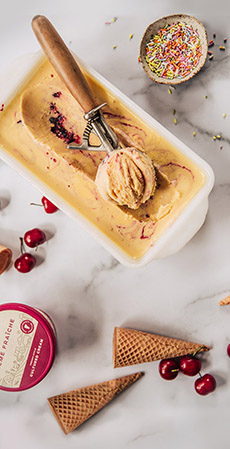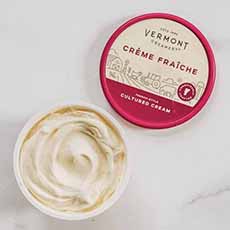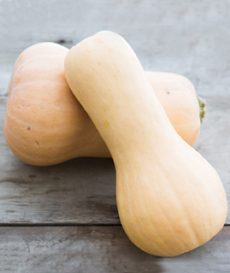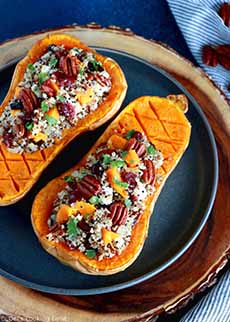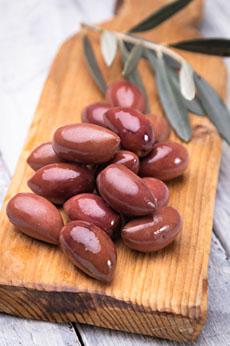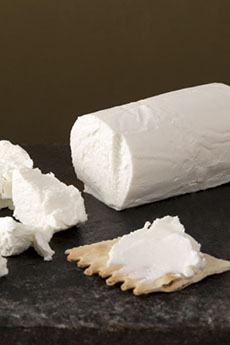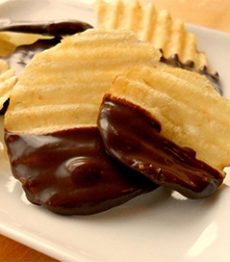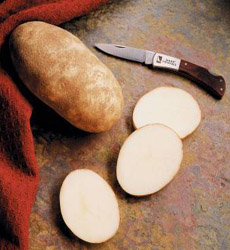|
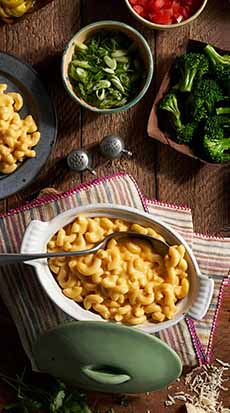
[1] Mac and cheese with toppings of choice; here, broccoli florets, chopped scallions and diced tomatoes (photo © Amy’s Kitchen).
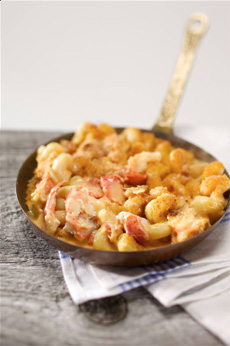
[2] Feeling flush? Top your mac and cheese with lobster (photo © Blake’s).
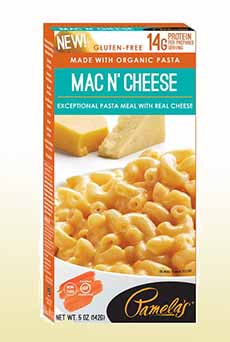
[3] One box, lots of gluten-free variations. Just add your toppings of choice, from broccoli or kale to chicken or seafood. Crab lobster are our favorites! (photo © Pamela’s Products).
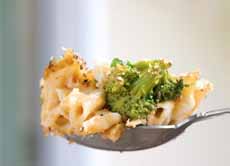
[4] Ready to take a bite? (photo © Hannah Kaminsky | Bittersweet Blog).
|
|
THE NIBBLE’s gluten-free expert, Georgi Page-Smith, tries a GF version of one of America’s favorite comfort foods.
It’s been a while since I succumbed to the siren song of a good Mac and Cheese.
I’ve tried a few fancy versions at various gourmet purveyors and even an unnamed frozen variety, but nothing has quite hit the mark.
And, to be honest, because my favorites have always involved way too much cheese and because I’ve become accustomed to a low-carb lifestyle, it has always been a guilty pleasure and not part of my regular rotation.
Not since the days when I would break out the Kraft Mac and Cheese while babysitting had I ever really been tempted to taste one of the many varieties of boxed Macs.
But, when gluten-free specialist Pamela’s Products stepped up recently, releasing two gluten-free Macaroni and Cheese flavors (one is vegan), with organic noodles, it was time to take a trip down memory lane.
The pasta is organic, made from gluten-free flour (organic white rice flour, organic pea protein, organic sprouted brown rice flour).
Mac N’ Cheese uses a blend of cheddar and blue cheeses, and 14g protein per serving.
Vegan Mac has a rich and creamy sauce made from pumpkin and sweet potato powders, with 10g protein per serving.
All ingredients are non-GMO.
WHIPPING UP PAMELA’S MAC & CHEESE
Enjoy it as a lunch on-the-go, or dress it up with a few vegetables, herbs and assorted trimmings for dinner.
Toasted breadcrumbs are a traditional mac & cheese garnish—recipe below).
I chose to make my Macs for a late lunch, putting their flavor, convenience and fuel potential to the ultimate test.
The standard Mac N’ Cheese was my first flavor, so that I could establish a ‘true North’ for the rest of my tastings. The instructions on the box are fairly standard, though they did call for boiling the noodles, then draining and mixing the butter, flavor packet and milk in the saucepan separately.
In our home the noodles were drained by holding the pan over the sink and pouring the water off while fencing the noodles using a warped and fire-scarred wooden spoon. Whatever water remained in the saucepan, or tucked into the noodles, was incorporated into the sauce.
So it was that with this first Mac from Pamela’s all of the additional ingredients went into the pan at once, over the al dente noodles, including 2 tablespoons of butter (not 3 tablespoons, as the recipe called for) and—for me—a “milk” that I hacked together by blending 50/50 heavy cream and water.
I am happy to report that Pamela’s is a very forgiving Mac N’ Cheese indeed! The first bite was incredibly, satisfyingly tangy and toothsome, with a springy, chewy texture to the noodles that created the perfect vehicle for the sauce.
But the sauce deserves a special shout-out, because after the addition of the butter and the milk, it did not merely settle for being a sauce; it was a legitimate, full-bodied cheese experience.
The cheese flavors had dimension, with a beginning-middle-and end notes that unfolded as I chewed. I highly recommend this variety without reservation, it is a definitive example of the genre.
Hats off to Pamela’s for coming up with a gluten-free pasta products that helped me give Mac N’ Cheese another try. These varieties are an extremely convenient comfort food ‘go to’ that people with gluten sensitivities should try, for a quick and tasty meal or side.
WHERE TO FIND IT
And it’s easy to order directly from Pamela’s website, where you’ll get to see all the other gluten-free products as well.
There’s a store locator on the website.
Call ahead to be sure the Mac & Cheese is in stock.
—Georgi Page-Smith
|
